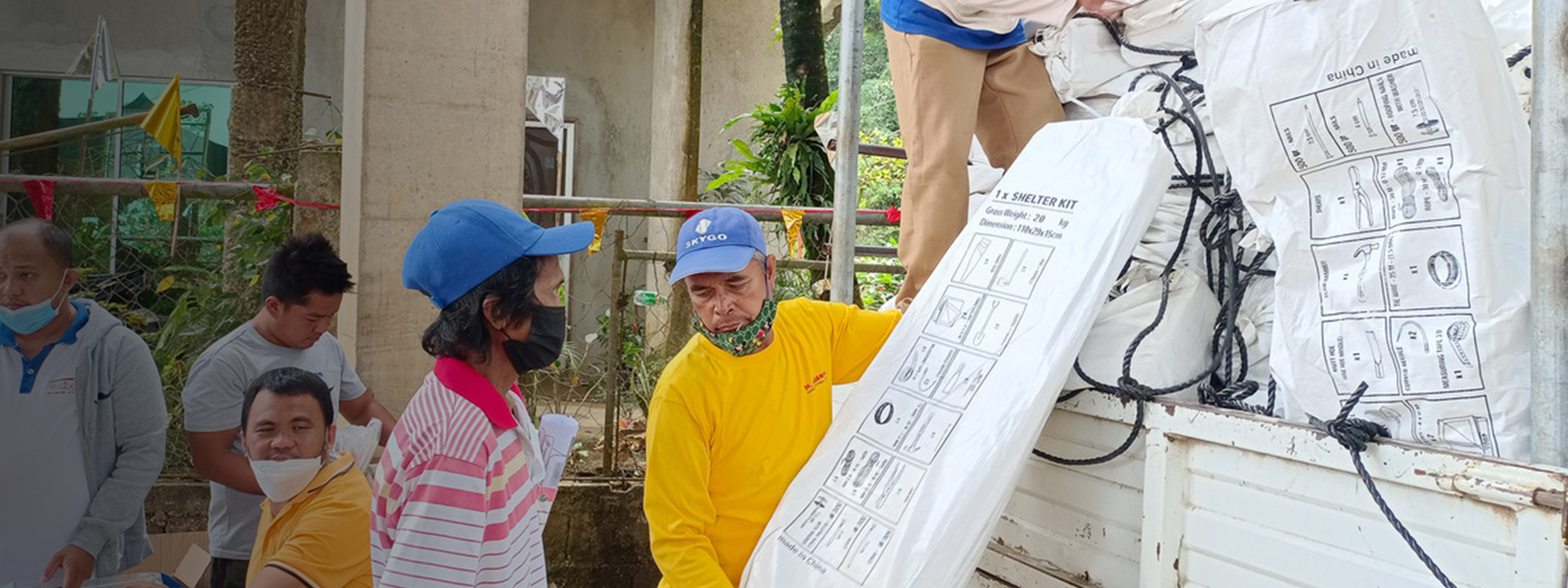
Blog
How We Reached 100,000 People in The Philippines After Typhoon Rai
When Super Typhoon Rai ravaged parts of the Philippines in December 2021, it damaged and destroyed 1.7 million homes. Typhoon Rai, locally known as Odette, was the most severe storm to hit the country in 2021.
We are proud to have provided shelter and emergency aid to over 100,000 people whose homes lay in the path of the super typhoon.
In fact, ShelterBox was one of the first charities to start distributing aid in the aftermath of the typhoon that hit just as families were preparing for Christmas.
The Philippines is ravaged so frequently by severe storms that we pre-position aid in the country. It’s also the only country where we have a permanent four-person team. The existence of ShelterBox Operations Philippines means we can scale up our response to meet the needs of people more quickly.
In total we will have reached over 20,000 families affected by Super Typhoon Rai. That’s more than 100,000 people who have better shelter as a result of all the help we’ve had from our supporters. All our aid stored in our Cebu warehouse quickly went to the families who needed it, so our stocks were low soon after the response.
The next step was to regroup, restock and prepare for the next time we are needed. With the help of our supporters, we can keep growing our presence in the Philippines so that ShelterBox can be at the forefront of shelter responses there.

The Impact of ShelterBox Aid
Island communities have received corrugated iron sheets, hurricane strapping, tarpaulin, rope and tools. These communities had found it most difficult to access essential resources to build shelter, so the items were very useful.
At the most basic level, a tarpaulin has made the difference between a shelter made of salvaged materials that leaks to one that doesn’t. That is a huge difference to the protection of household items and physical health, but to people’s emotional and mental wellbeing.
In addition, we have provided solar lights to communities that didn’t have a stable electricity supply. People living in areas known to have Dengue fever received mosquito nets, and we also provided cash assistance.
Using their complimentary cash, families were able to buy new materials. They were also able to hire skilled labor to construct strong new homes, which are so much more than a repaired shelter. There was a real sense of these new shelters being people’s new homes, as they would be using them for a long time.

We Can't Do It Alone
Our local partnerships with Rotary, Humanity and Inclusion, and local governments have helped us get aid to some of the hardest to reach locations such as Bohol.
Rotarians gave us local connections to communities that had been overlooked so we were able to support them. They provided amazing support during aid distributions, and the Rotary Club of Cebu connected us to suppliers and helped with transport.
We are constantly working to be prepared to respond to disasters and to grow and develop our capacities. That’s both in scale and in quality, and being able to serve needs in a diverse way.
Everywhere we respond, we always make great local connections that serve well for the future. This ever-increasing knowledge is perfectly complimented by having prepositioned items in our warehouse in Cebu.
This capacity, combined with our understanding around how to effectively move aid anywhere in the country, means we are constantly ready to respond quickly, flexibly and with what communities really need to recover.
You make all of this possible – thank you. You can support our work today and help us always be prepared whenever disaster strikes.



